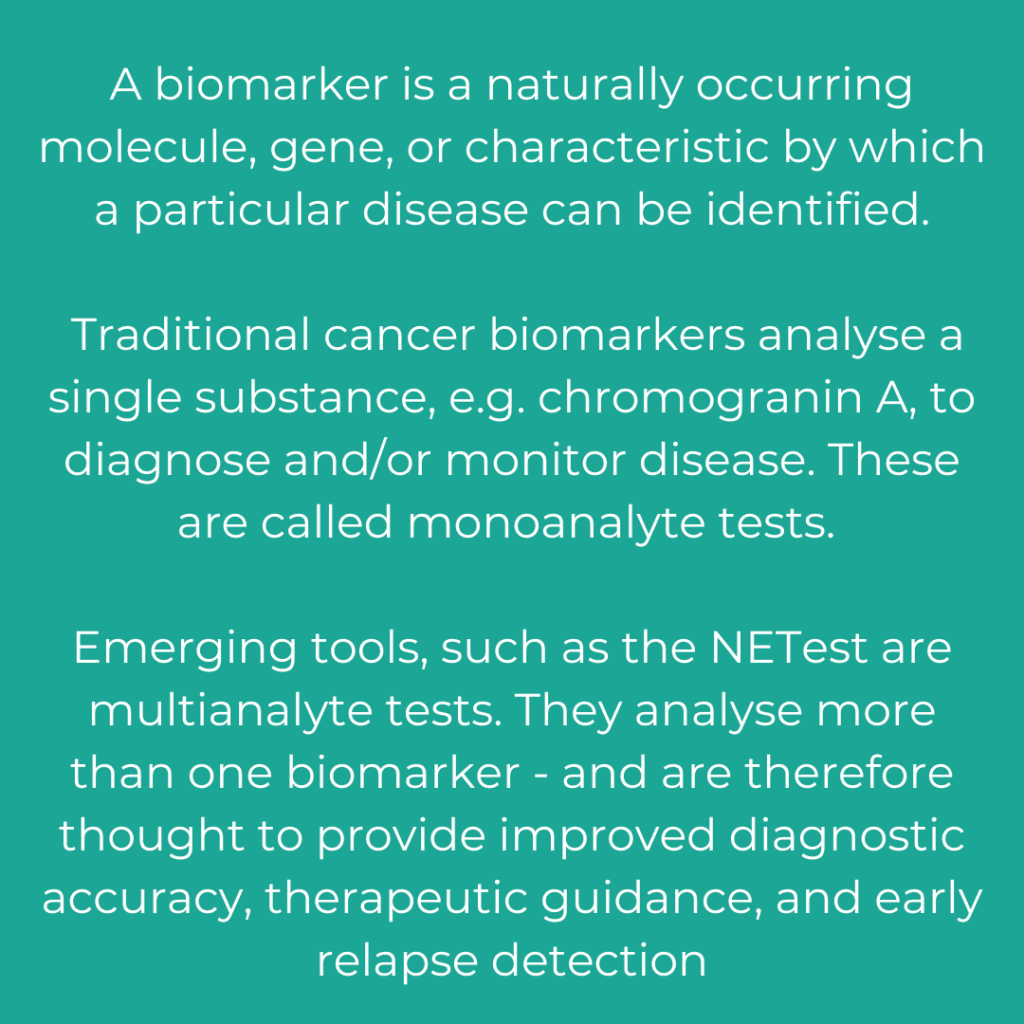Bevere et al (2023) An Overview of Circulating Biomarkers in Neuroendocrine Neoplasms: A
Clinical Guide. Diagnostics 2023, 13, 2820.
This article reviews the challenges associated with diagnosing and managing neuroendocrine neoplasms (NENs), a diverse group of tumors with varying clinical behaviours.
The introduction highlights the rarity of NENs, their variability, and the difficulties in timely diagnosis, with delayed diagnoses leading to metastases in a significant percentage of cases. Authors categorise NENs into well-differentiated NETs (80-90%), poorly differentiated NECs (10-20%), and mixed neuroendocrine/non-neuroendocrine forms. NETs were further divided into functioning and non-functioning tumors – based on hormone secretion, which may affect their prognosis.
The diagnosis of NENs relies on certain markers, but due to the invasive nature of biopsies and potential limitations of histopathology, there’s a need for non-invasive, accurate and reliable biomarkers.
The article’s abstract introduces the problem of diagnosing NENs and highlights the limitations of current biomarkers, such as chromogranin A (CgA), due to their poor sensitivity and specificity. Emerging tools for accurate diagnosis and treatment monitoring, such as the NETest, are discussed and presented as possible alternatives. The review focuses on three main questions: accurate and early diagnosis, monitoring disease progression and therapy response, and detecting early relapse.
In the conclusion, the article emphasises the ongoing need for reliable, cost-effective, NEN biomarkers that combine diagnostic accuracy, therapeutic guidance, and early relapse detection. It discusses the performance of various biomarkers, highlighting that CgA is only acceptable for well-differentiated NENs, and while CTCs may indicate metastasis formation and chemo-resistance, they are not always detectable.
MiRNA and ctDNA show promise but lack standardisation guidelines. In contrast, the NETest appears to perform better for early diagnosis, monitoring therapeutic efficacy, and detecting relapse. The authors call for a direct comparison between these biomarker types, potentially through larger, multi-institutional studies, to establish their validity as clinical diagnostic tools, particularly comparing NETest to currently used markers like CgA and imaging techniques.
You can read the complete article here

